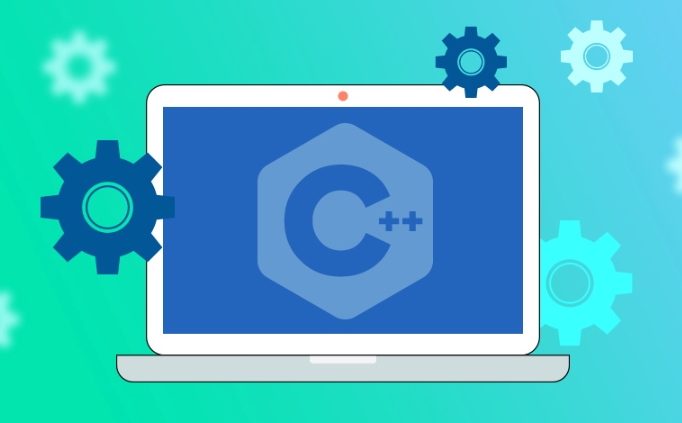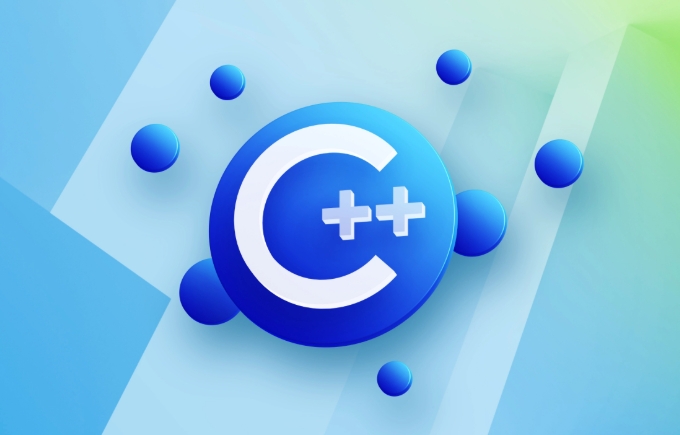什么是C中的POD(普通旧数据)类型?
在C 中,POD(Plain Old Data)类型是指结构简单且与C语言数据处理兼容的类型。它需满足两个条件:具有平凡的拷贝语义,可用memcpy复制;具有标准布局,内存结构可预测。具体要求包括:所有非静态成员为公有、无用户定义构造函数或析构函数、无虚函数或基类、所有非静态成员自身为POD。例如struct Point{int x; int y;}是POD。其用途包括二进制I/O、C互操作性、性能优化等。可通过std::is_pod检查类型是否为POD,但C 11后更推荐用std::is_trivial和std::is_standard_layout。使用时注意避免私有成员、继承、虚函数及某些构造函数,以免破坏POD特性。

In C , a POD (Plain Old Data) type refers to a type that's both simple in its structure and compatible with C-style data handling. These types can be safely copied with memcpy, initialized with {0} notation, and generally behave predictably in low-level operations.

POD types are especially useful when you need interoperability with C libraries or when performance and memory layout matter—like in systems programming, embedded systems, or when working with serialization libraries.

What Makes a Type a POD?
A type is considered a POD in C if it satisfies two main conditions:
-
Trivial Copy Semantics: The type can be copied using memory copy functions like
memcpywithout side effects. - Standard Layout: The memory layout of the type follows standard conventions so that it can be accessed predictably across different systems or languages.
Here’s what qualifies as a POD:

- All non-static data members are public.
- It has no user-defined constructors or destructors.
- It doesn’t have virtual functions or base classes.
- All non-static data members are themselves PODs.
For example:
struct Point {
int x;
int y;
};This Point struct is a POD because it meets all the above criteria.
Why Are POD Types Still Relevant?
Even though modern C introduces more complex abstractions, POD types remain valuable for specific use cases:
- Binary I/O and Serialization: Since they have a predictable layout, they can be directly written to or read from binary files or network streams.
- C Interoperability: You can pass them to C functions without worrying about name mangling or incompatible layouts.
- Performance Optimization: They’re easier for compilers to optimize and are often used in performance-critical code.
If you're building something like a game engine or a device driver, you’ll likely encounter situations where sticking with POD types makes your life easier.
How to Check If a Type Is POD
You don’t always have to guess whether a type qualifies as a POD. C provides a built-in trait for checking this:
#include <type_traits> static_assert(std::is_pod<Point>::value, "Point should be a POD");
However, starting with C 11, the term “POD” became less central. Instead, the language introduced finer-grained traits like std::is_trivial and std::is_standard_layout. So while std::is_pod still exists, you can also test those two properties separately if you want more control.
Practical Use Cases and Common Pitfalls
Some real-world examples where PODs shine include:
- Sending structs over a network without extra serialization logic.
- Memory-mapped hardware registers in embedded systems.
- Sharing data between threads without synchronization overhead.
But beware: once you add things like private members, inheritance, or virtual functions, your type is no longer a POD. That can silently break assumptions in legacy or system-level code expecting POD behavior.
Also, even adding a default constructor like this:
struct Point {
int x;
int y;
Point() = default; // Not allowed for PODs before C 14
};can disqualify your type depending on the C version you're targeting.
So if you're designing a struct and want it to stay compatible with C or memory-sensitive environments, keep it simple. Stick to public fields, no virtual anything, and avoid custom constructors unless you're sure they won't affect the type's triviality.
基本上就这些。
以上是什么是C中的POD(普通旧数据)类型?的详细内容。更多信息请关注PHP中文网其他相关文章!

热AI工具

Undress AI Tool
免费脱衣服图片

Undresser.AI Undress
人工智能驱动的应用程序,用于创建逼真的裸体照片

AI Clothes Remover
用于从照片中去除衣服的在线人工智能工具。

Stock Market GPT
人工智能驱动投资研究,做出更明智的决策

热门文章

热工具

记事本++7.3.1
好用且免费的代码编辑器

SublimeText3汉化版
中文版,非常好用

禅工作室 13.0.1
功能强大的PHP集成开发环境

Dreamweaver CS6
视觉化网页开发工具

SublimeText3 Mac版
神级代码编辑软件(SublimeText3)
 如何编译和运行C程序
Sep 16, 2025 am 05:29 AM
如何编译和运行C程序
Sep 16, 2025 am 05:29 AM
InstallaC compilerlikeg usingpackagemanagersordevelopmenttoolsdependingontheOS.2.WriteaC programandsaveitwitha.cppextension.3.Compiletheprogramusingg hello.cpp-ohellotogenerateanexecutable.4.Runtheexecutablewith./helloonLinux/macOSorhello.exeonWi
 C自定义分配器示例
Sep 17, 2025 am 08:45 AM
C自定义分配器示例
Sep 17, 2025 am 08:45 AM
自定义分配器可用于控制C 容器的内存分配行为,1.示例中的LoggingAllocator通过重载allocate、deallocate、construct和destroy方法实现内存操作日志记录;2.分配器需定义value_type和rebind模板,以满足STL容器类型转换需求;3.分配器构造与拷贝时触发日志输出,便于追踪生命周期;4.实际应用包括内存池、共享内存、调试工具和嵌入式系统;5.C 17起construct和destroy可由std::allocator_traits默认处理
 如何在C中执行系统命令
Sep 21, 2025 am 04:35 AM
如何在C中执行系统命令
Sep 21, 2025 am 04:35 AM
使用std::system()函数可执行系统命令,需包含头文件,传入C风格字符串命令,如std::system("ls-l"),返回值为-1表示命令处理器不可用。
 C抽象类示例
Sep 15, 2025 am 05:55 AM
C抽象类示例
Sep 15, 2025 am 05:55 AM
抽象类是包含至少一个纯虚函数的类,不能被实例化,必须作为基类被继承,且派生类需实现其所有纯虚函数,否则仍为抽象类。1.纯虚函数通过virtual返回类型函数名()=0;声明,用于定义接口规范;2.抽象类常用于统一接口设计,如area()、draw()等,实现多态调用;3.必须为抽象类提供虚析构函数(如virtual~Shape()=default;),确保通过基类指针正确释放派生类对象;4.派生类继承后需重写纯虚函数,如Rectangle和Circle分别实现area()计算各自面积;5.可通过
 如何在C中实现自定义迭代器
Sep 20, 2025 am 01:13 AM
如何在C中实现自定义迭代器
Sep 20, 2025 am 01:13 AM
答案是定义包含必要类型别名和操作的类。首先设置value_type、reference、pointer、difference_type和iterator_category,然后实现解引用、递增及比较操作,最后在容器中提供begin()和end()方法以返回迭代器实例,使其兼容STL算法和范围for循环。
 为什么实时系统需要确定性响应保障?
Sep 22, 2025 pm 04:03 PM
为什么实时系统需要确定性响应保障?
Sep 22, 2025 pm 04:03 PM
实时系统需确定性响应,因正确性依赖结果交付时间;硬实时系统要求严格截止期限,错过将致灾难,软实时则允许偶尔延迟;非确定性因素如调度、中断、缓存、内存管理等影响时序;构建方案包括选用RTOS、WCET分析、资源管理、硬件优化及严格测试。
 如何在C中创建静态变量
Sep 19, 2025 am 05:24 AM
如何在C中创建静态变量
Sep 19, 2025 am 05:24 AM
AstaticVariableInc witherinsitvaluebetwunctioncallsandisinitializedonce.2.Inideafunction,itpreservesstataTateAcrossCalls,siseascountingIterations.3.inaclass,itissharedamondamongallinStancessandMustancessandMustancessandMustbedIendEctIndEtheClastoAvoVovoiDlinkingErrors.4.StaticvariA.StaticvAriA.StaticVariA.StaticVariA
 如何将整个文件读取到C中的字符串中
Sep 18, 2025 am 06:07 AM
如何将整个文件读取到C中的字符串中
Sep 18, 2025 am 06:07 AM
使用std::ifstream和std::istreambuf_iterator可高效读取文件全部内容到字符串,包括空格和换行,适用于中等大小文本文件。






